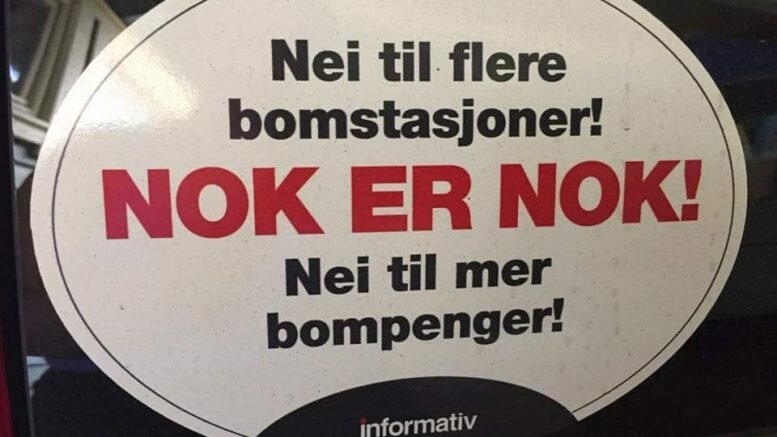Many Norwegians will vote against toll walls this autumn
The resistance against the toll walls inside and around the bigger cities may well cost the established political parties dearly. These, coupled with the already high taxes on transport, means that the anti-toll party (FNB) seems to make major inroads. “The toll walls issue has explosive potential,” election researcher, Svein Tore Marthinsen believes.
FNB (The People’s Action No To More Tolls) has managed to muster election lists in five counties: Oslo, Rogaland, Telemark, Vestfold, Vestland and Viken. In addition, FNB, which is registered as a national party, runs in eleven municipalities in the Skien area, on the North Jæren and in the Bergen area. FNB originates in Stavanger, where it currently holds 3 seats in the city council.
In Drammen, voters can vote for the list No to Toll Walls, and in Tromsø, the pundits can choose between two lists: No to Tolls and the City and Country list. The latter also has other issues on their agenda but has gained momentum with their resistance against planned toll stations.
Toll resistors have not managed to do the same in Kristiansand and Trondheim. That may be related to the fact that the inhabitants haven’t yet felt the consequences as much.
persons who are opposed to tolls, who believe that this is the most important issue of the election, have thus ample opportunity to use the ballot to make their voice heard. Of the traditional parties, the Progress Party is the only one which officially is opposed to tolls (both toll walls and roads). They, however, have never vetoed a single project whilst in government.
“The toll issue has enough power to make it possible to mobilize in a single election. These lists may become a decisive factor, but the question is whether they can keep their momentum up until then,” election researcher, Svein Tore Marthinsen, tells NTB.
FNB garnished almost 17 per cent support in a poll made by Bergens Tidende last week. The party is thus the third largest in Bergen at the moment.
Well organized
Marthinsen states that there are still no polls which include the support for FNB at the national level, but believes that the anti-tollers should be praised for having managed to organize themselves, and run for election in so many places.
“One thing is to have commitment. It’s a step up from there to get people to run and gather enough signatures. That is a rather good organizational job,” he observes.
Marthinsen believes that the commitment to this issue should not come as a surprise to established political parties.
“It has probably been clear to some that tolls are unpopular,” the researcher states. He adds that the large support in Bergen may have been a wake-up call for many even so.
Controversial agreements
Many of the municipalities in which the toll-opponents run for election are located in areas that have already or are about to receive so-called “urban growth” agreements with the Norwegian state. This means that the tolls will be used to finance public transport, pedestrian and bicycle routes, in addition to road projects. The goal is to force fewer people to travel by car, (over)fulfilling the Parliaments commitment to the Paris Agreement.
The opponents point to the fact that the goal is an absolute cap on the number of cars on Norwegian roads, ignoring the fact that the population grows and that they choose much more eco-friendly vehicles than before.
About a few toll walls
- In Bergen and the surrounding area, approximately NOK 1 billion in tolls will be required annually until 2037 in order to finance the so-called “Environmental Promotion” (Miljøløftet) and pay down debts on projects that have already been completed.
- A bill, totalling NOK 25 billion, will be issued to the motorists in the Stavanger region (North Jæren) to finance the “Urban Environment Package” with, among other things, busways, (a scantly used) bicycle thoroughfare and road projects. A large portion goes, however, to payment of existing debts and pure administration of the toll wall, according to Stavanger Aftenblad.
- Oslo and Akershus are presented with 52 additional toll stations on July 1st in order to finance “Oslo Package 3” – the most expensive of the urban environment agreements in Norway. This will basically entail a continued sluicing of all traffic through the city, instead of around it.
- NOK 7.5 billion in toll revenues will be spent in Trondheim on various projects until 2029.
- The goal for For the Drammen region was for the Parliament to treat the so-called “Buskerud City Package 2” before the summer. Ten list tops of the Conservatives declared last week that they would not support it. Toll opponents claim to have gathered nearly 30,000 signatures. The city council will, furthermore, decide on a proposal from the Progress Party to reject the already negotiated package on April 30th.
© NTB Scanpix / #Norway Today










